20 Ducks with Blue Feathers (with Pictures & ID Guides)
We often admire ducks for their greens, browns, and white feathers, but some species also flaunt stunning blue plumage. Contrary to popular belief, this blue isn’t caused by pigment but by tiny feather structures that reflect light, creating a shimmering, iridescent effect. In some ducks, the blue shows up on the wings as a bright flash, while in others it appears on the head, neck, or body, adding a striking splash of color.
These vivid blue feathers serve multiple purposes: they can help ducks recognize members of their own species, attract mates during courtship, or signal health and vitality. The shade and placement of blue can vary with species, individual birds, and even the angle of the light.
Here’s a look at some duck species that boast beautiful blue feathers, ranging from subtle highlights to bold, eye-catching displays.
- 1. Mallard (Female and Eclipse Males)
- 2. Blue-winged Teal
- 3. Northern Shoveler
- 4. Common Teal (Eurasian Teal)
- 5. Wood Duck
- 6. Common Shelduck
- 7. Greater Scaup
- 8. Lesser Scaup
- 9. Red-breasted Merganser
- 10. Cayuga Duck
- 11. Black East Indian Duck
- 12. Muscovy Duck
- 13. Blue Duck
- 14. American Black Duck
- 15. Harlequin Duck
- 16. Steller’s Eider
- 17. Paradise Shelduck
- 18. Pomeranian Duck
- 19. African Black Duck
- 20. Australian Spotted Duck
1. Mallard (Female and Eclipse Males)
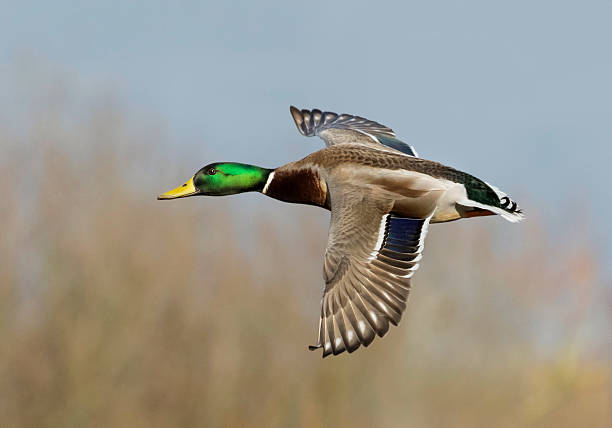
The common mallard is one of the first ducks you’ll spot with blue feathers. Both males and females feature a striking blue-purple wing patch called a speculum. It’s bordered by white, so it really pops when they stretch their wings or take flight. Males (or drakes) have shiny green heads, while females are mostly brown with speckles. Even the females’ wings show that striking blue patch. Mallards are fairly large for dabbling ducks, and they are famous for being the main ancestors of domestic ducks. When watching them, check for that vivid blue wing flash—it’s a helpful way to identify them from other brown or green-feathered ducks in ponds or lakes.
2. Blue-winged Teal
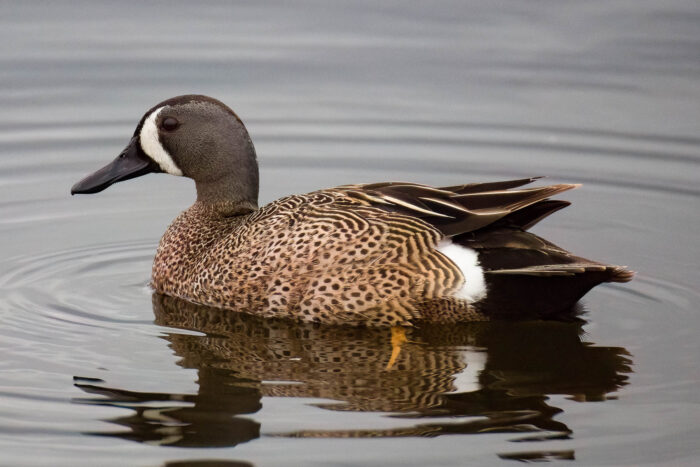
Blue-winged teals are easy to recognize, thanks to the pale blue patch on their shoulders, visible when they fly. The adult males also have a greyish-blue head with a white crescent near the face, while females are mottled brown. Both males and females have sky-blue wing feathers, called wing coverts, and green speculum feathers near the back of the wing. These little flashes of blue make them stand out, even though the rest of their body is more muted in color. They are small, quick, and fun to spot in shallow waters and marshes.
3. Northern Shoveler
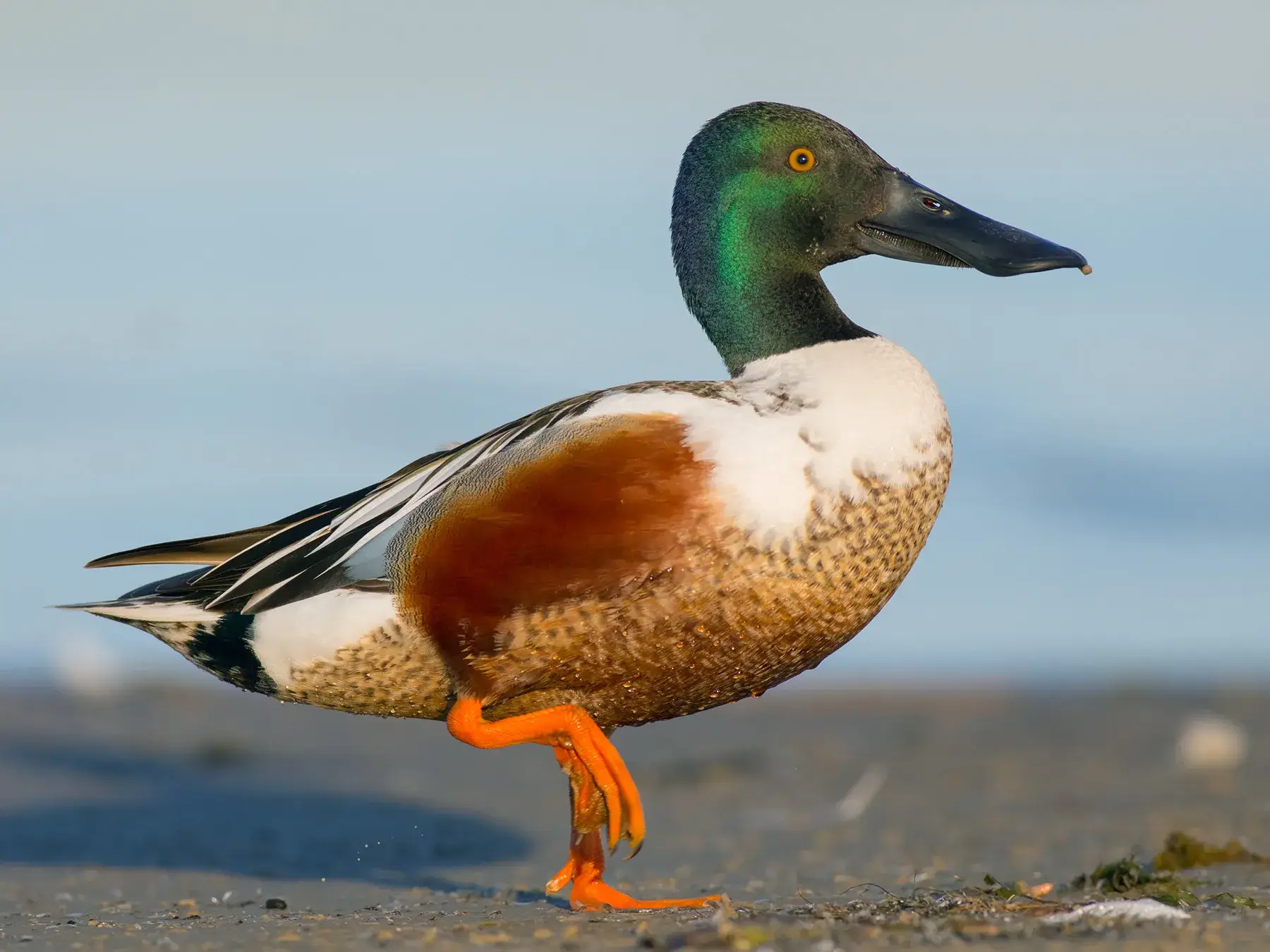
Northern shovelers have one of the most unusual duck bills, but their wings have a beautiful feature too. Male shovelers have pale blue feathers near the shoulders that show up in flight, separated from the green speculum by a white border. Females are duller in color, mostly brown, but their forewings are grey, giving just a hint of color. Watching a shoveler take off is a great way to see that blue flash sparkle against the orange-red legs and chestnut belly of the males.
4. Common Teal (Eurasian Teal)
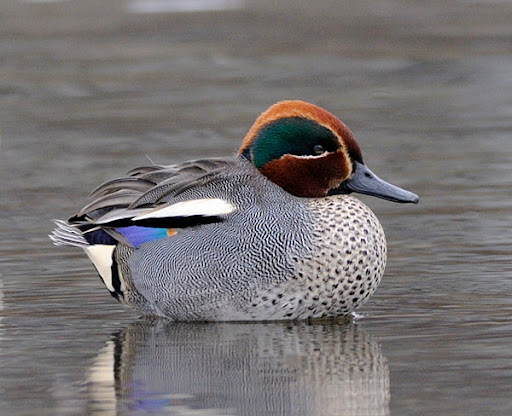
Common teals are small and quick, but don’t miss the blue-green wing speculum when they fly. Males in breeding plumage have brighter markings, but even females and immatures have wings with subtle blue feathers that shimmer in sunlight. Their tiny size, quick movements, and that bright speculum make them a delight to watch in rivers and marshes. That little patch of blue is often the first thing birdwatchers notice as the teals zip by.
5. Wood Duck
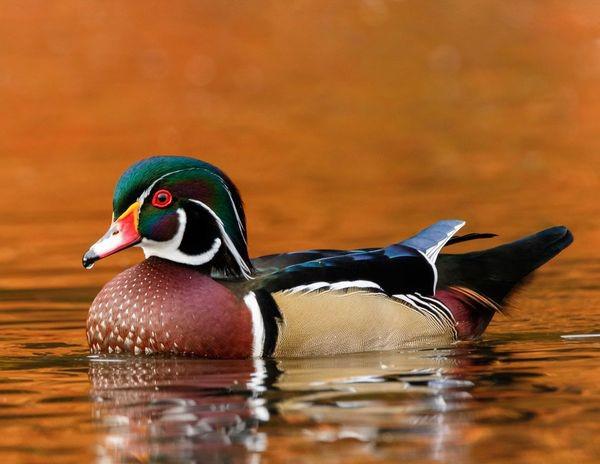
Male wood ducks are some of the most colorful ducks you’ll ever see. Their feathers sparkle in sunlight, showing a mix of iridescent greens, purples, and blues. The wings and back often shine with bright blue when the bird moves, making them look like tiny jewels floating on water. These dazzling colors help birdwatchers pick out the males easily from a distance. Watching a male wood duck preen or stretch its wings is a treat because that blue flash really catches your eye.
6. Common Shelduck
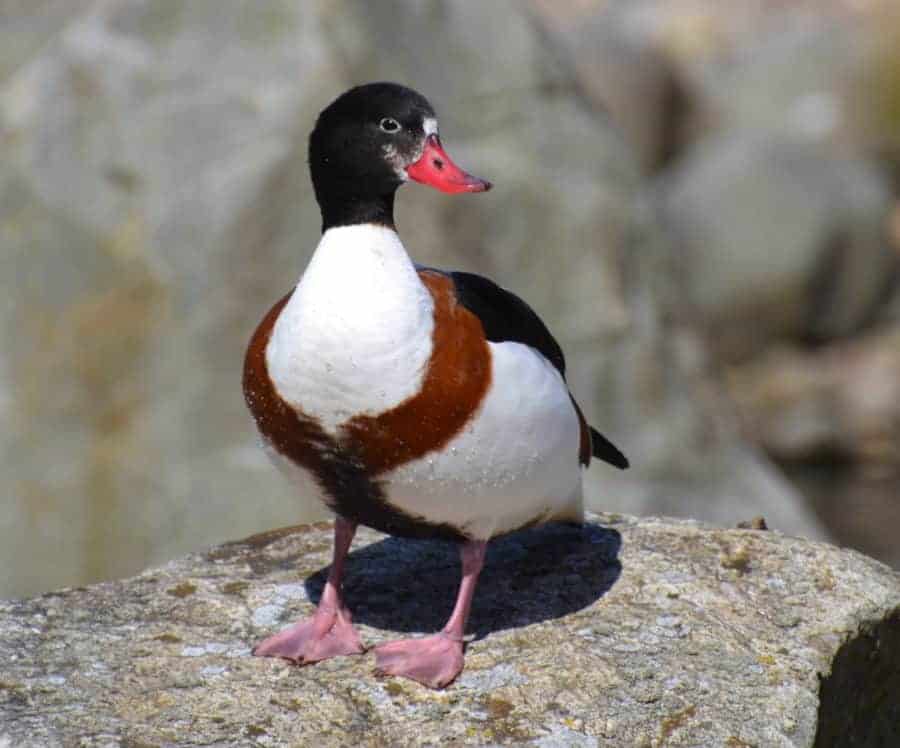
The common shelduck may seem mostly black and white at first, but if the light hits just right, its dark wing feathers reveal a beautiful blue-green sheen. This subtle shimmer is easiest to see when the duck is flying or stretching its wings. Even though it’s not as bright as the wood duck’s colors, it adds an elegant hint of blue that makes the shelduck stand out among other waterfowl.
7. Greater Scaup
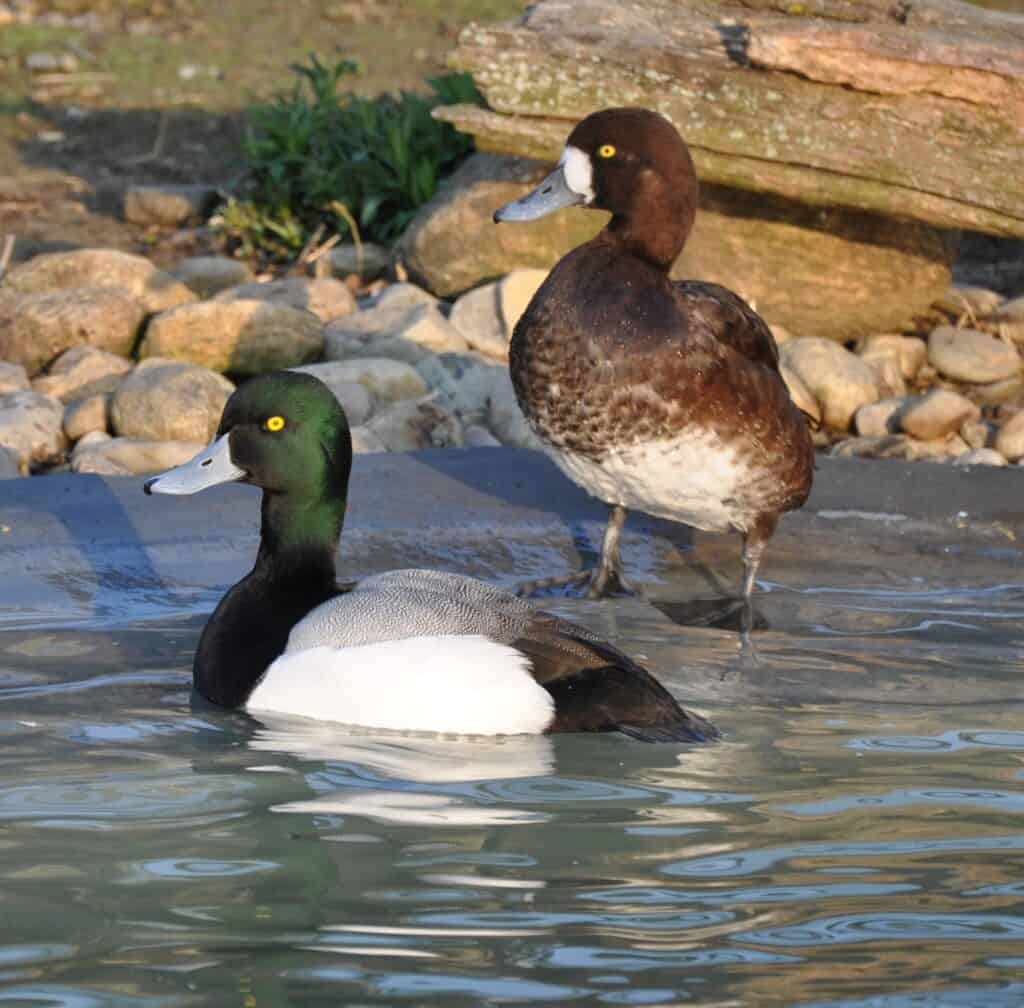
Greater scaups are striking diving ducks, and the males often show glossy blue feathers on their wings and heads in good light. The blue is soft but noticeable, and it contrasts nicely with their black and white body feathers. These flashes help identify the males while they swim or dive in lakes and coastal waters.
8. Lesser Scaup
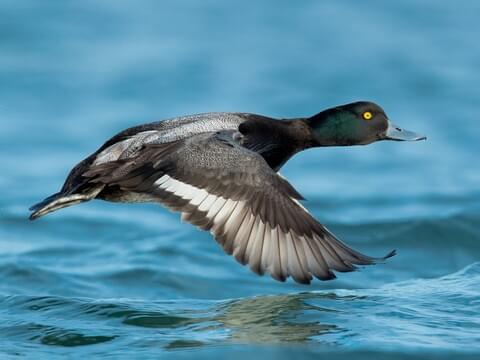
Lesser scaup males are similar to their greater cousins but a bit smaller. They have subtle blue and purple iridescence on their heads that changes with the angle of sunlight. While not as bold as other blue-feathered ducks, this delicate shimmer gives them a beautiful, mysterious glow that’s rewarding to spot for careful birdwatchers.
9. Red-breasted Merganser
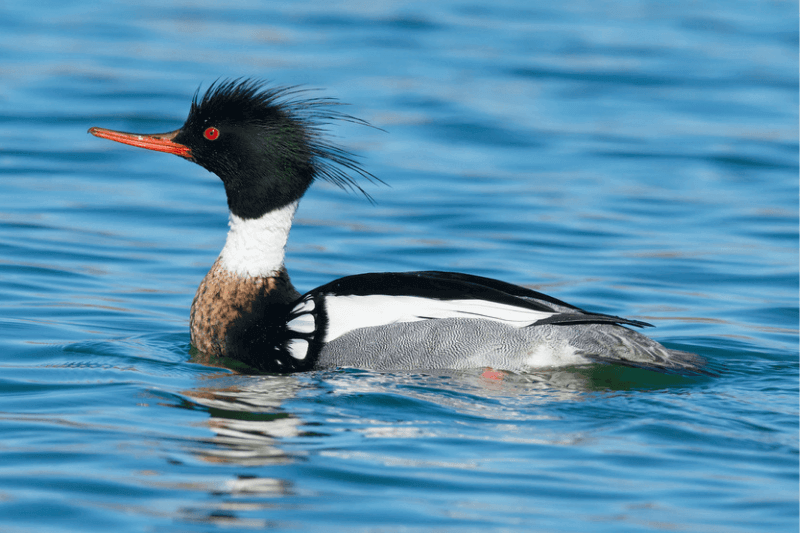
Red-breasted mergansers are fun to identify because their wings have bluish-gray feathers paired with white patches. Males have a dark head with a green sheen, a white neck, rusty chest, and black back, but when they fly, the pale bluish-gray wing feathers stand out beautifully against their darker body. Females and juveniles are more muted, but you can still see the bluish tones in their wings. That little splash of blue makes them easier to spot even at a distance on rivers or coastal waters.
10. Cayuga Duck
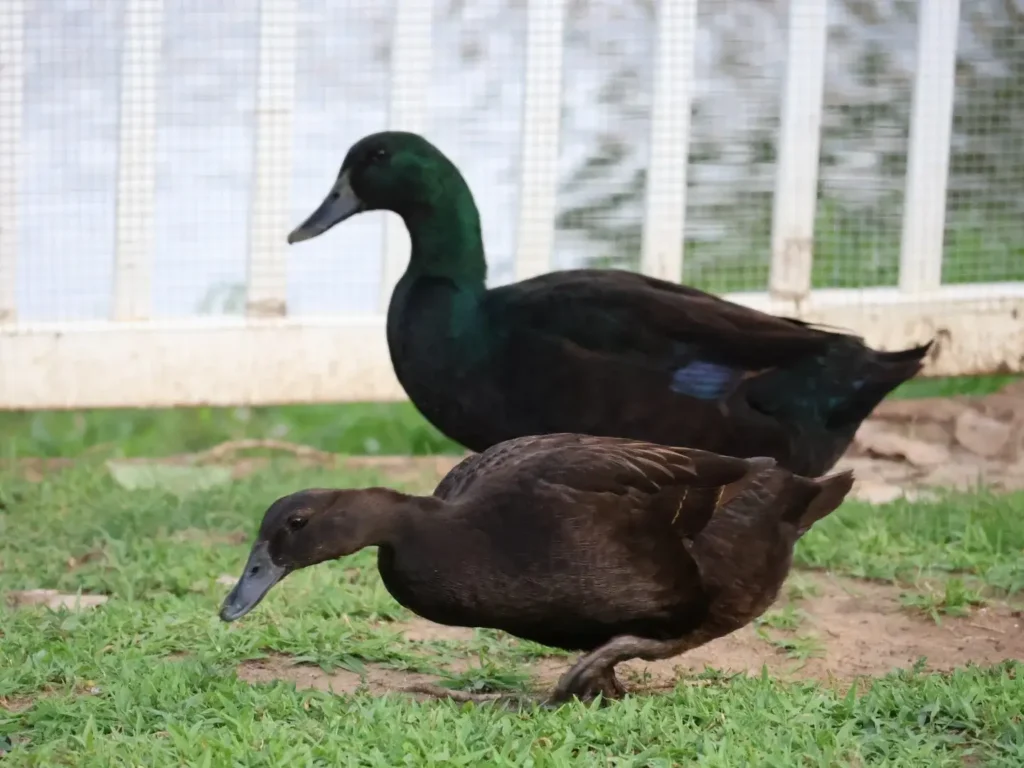
Cayuga ducks are striking because of their shiny, dark plumage that can sometimes appear to have bluish highlights under the sunlight. Most of the feathers look black, but careful observation reveals a subtle iridescent blue sheen on their body and wings. This glossy effect gives the Cayuga a jewel-like appearance, making them a favorite among duck enthusiasts who enjoy both their color and calm temperament.
11. Black East Indian Duck
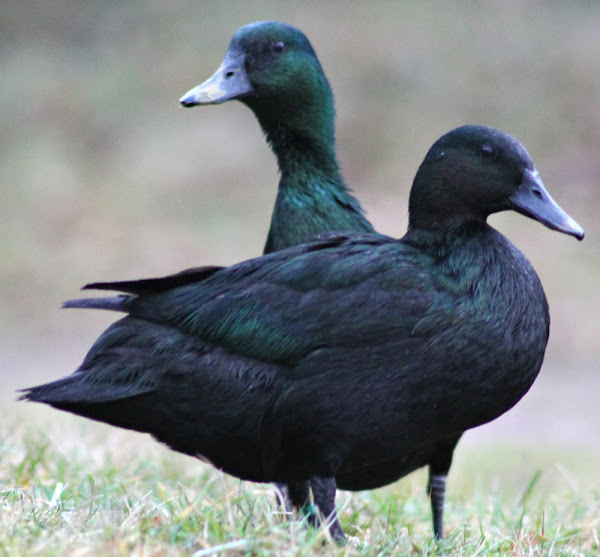
The East Indian or East Indie bantam duck has very dark feathers that often shimmer with greenish-black tones, and sometimes a bluish cast is visible when sunlight hits the wings. These tiny ducks are usually under 1 kg, with sleek black bills, and are more reserved than other bantams. Their subtle blue highlights make them stand out quietly without being flashy, perfect for hobbyists who enjoy observing gentle, elegant ducks.
12. Muscovy Duck
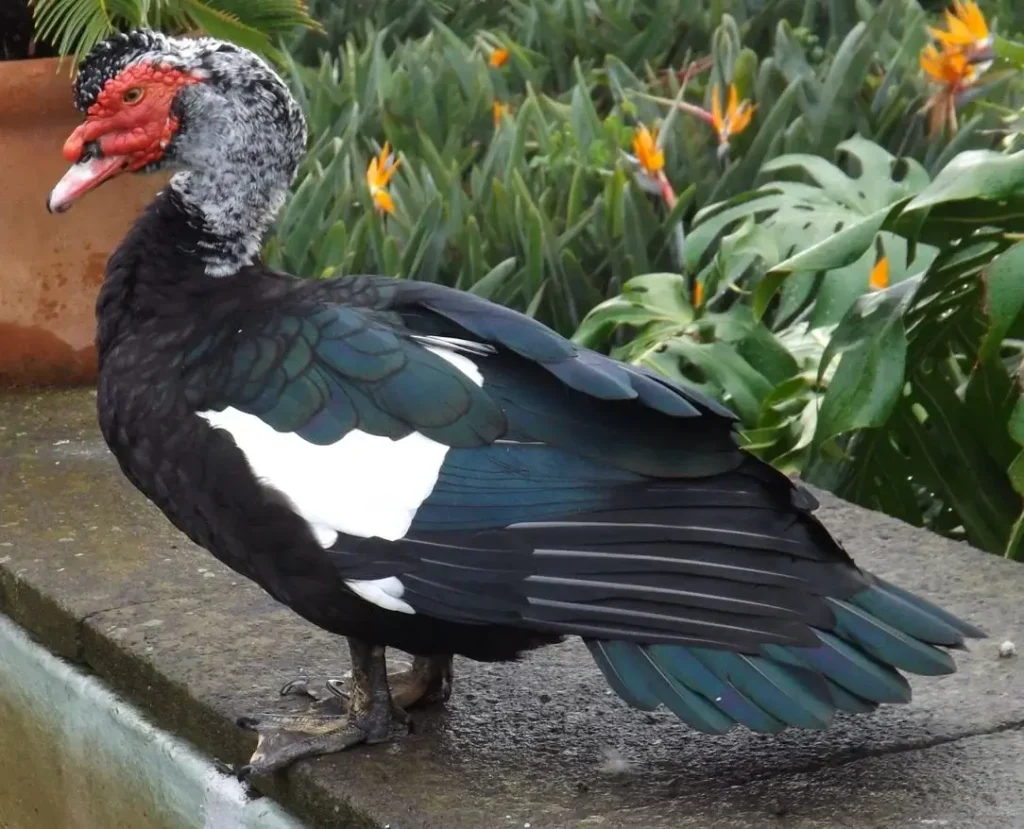
Muscovy ducks don’t always shout with color, but they can show a soft bluish-gray on their wings, particularly when the light catches the edges. Their plumage is mostly dark with a greenish sheen on the head, and some chestnut flecks on the breast. These ducks have a unique, slightly wild look with a pinkish-white bill framed by fleshy flaps, and spotting the bluish wing feathers adds a special detail for careful birdwatchers.
13. Blue Duck
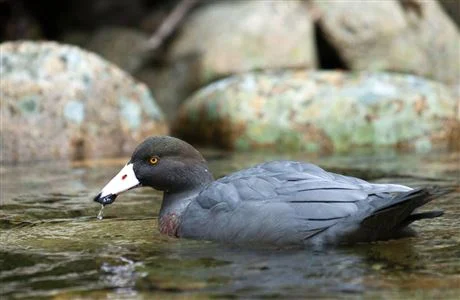
True to its name, the blue duck has slate-gray feathers all over, with a soft greenish shine on its head that can look almost blue in certain light. The wings are edged with black and white, creating a subtle contrast that highlights the bluish tones. Both males and females show these colors, though females may have slightly less chestnut on the chest. Their unique blue-gray color makes them stand out from other waterfowl in rivers and fast-flowing streams.
14. American Black Duck
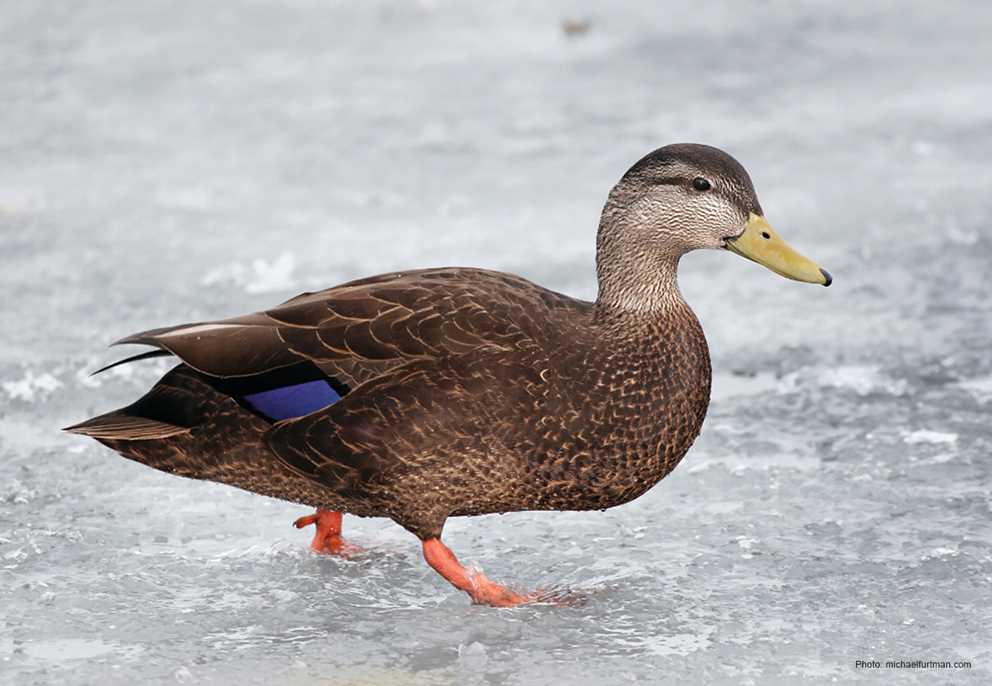
The American black duck may look dark at first glance, but a closer look reveals its iridescent violet-blue wing speculum bordered with black. This flash of color appears when the duck spreads its wings in flight or preening. Their brownish-black body feathers make the blue stand out even more, creating a beautiful contrast. Both males and females share this stunning wing feature, giving observers a glimpse of hidden color in an otherwise dark-feathered duck.
15. Harlequin Duck
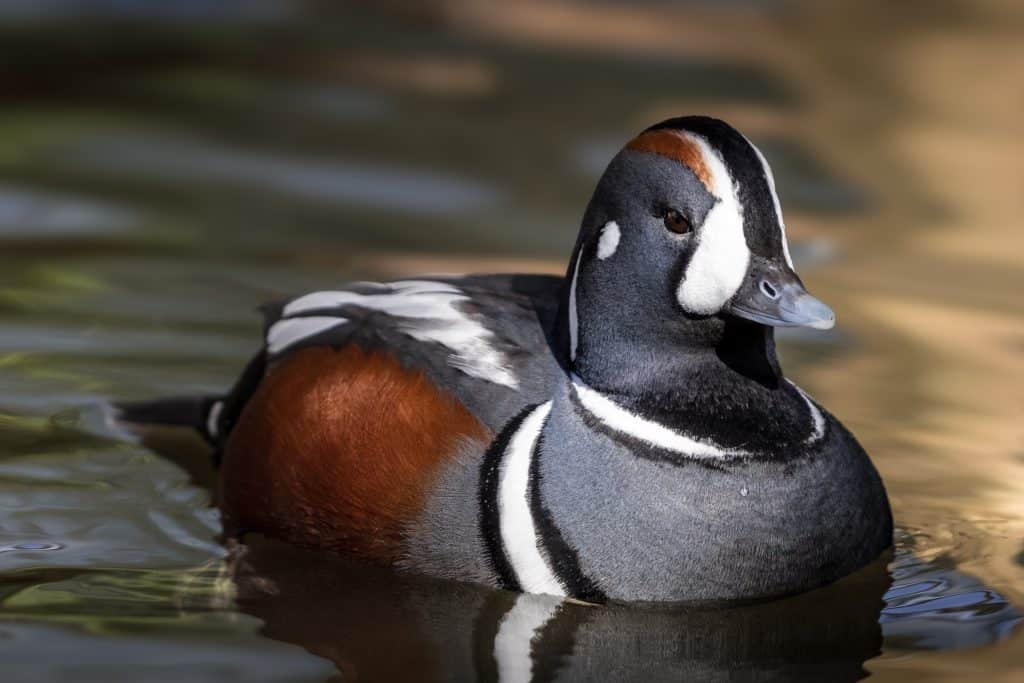
Harlequin ducks are small, striking birds that really stand out in fast-flowing rivers. The males show off an intricate mix of colors, including patches of blue on their wings that shimmer in sunlight. These blue areas are part of their patterned wings, which also include white and chestnut markings. Females are more muted but still show a bluish speculum along their wing feathers. When you see a Harlequin duck in motion, the flashes of blue can help you spot them among rocks and rapids.
16. Steller’s Eider
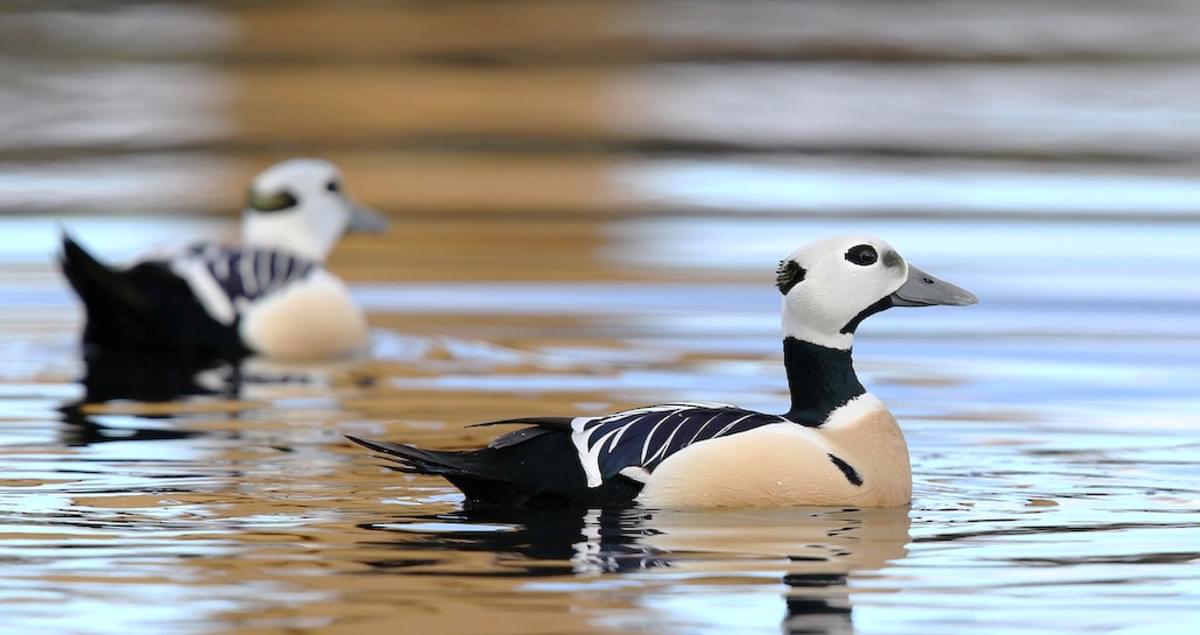
Steller’s eiders are tiny sea ducks with surprising flashes of color. Both males and females have bluish-purple feathers on their wings called speculums, often bordered with white. In males, these colors shine brightest during breeding season, mixed with black, white, green, and cinnamon elsewhere on the body. Even females, which are mostly brown, show that iridescent bluish wing patch. For birdwatchers, spotting the blue on a Steller’s eider’s wings is a sure way to tell them apart from other small ducks.
17. Paradise Shelduck
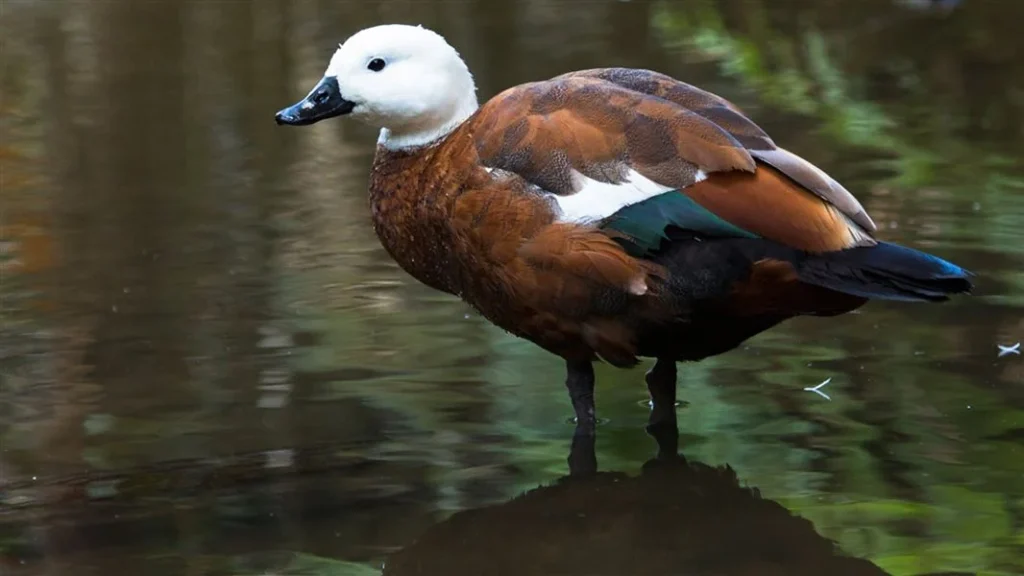
Paradise shelducks are large, bold birds with colorful wings. The males have metallic green speculum feathers that can appear bluish depending on the light. These blue-green flashes sit among white and black wing feathers, making them look almost painted. Females are less flashy, but males’ wings are hard to miss when they stretch or fly. Their mix of blue, green, and rusty tones makes these ducks a favorite for anyone who enjoys bright and unusual duck colors.
18. Pomeranian Duck
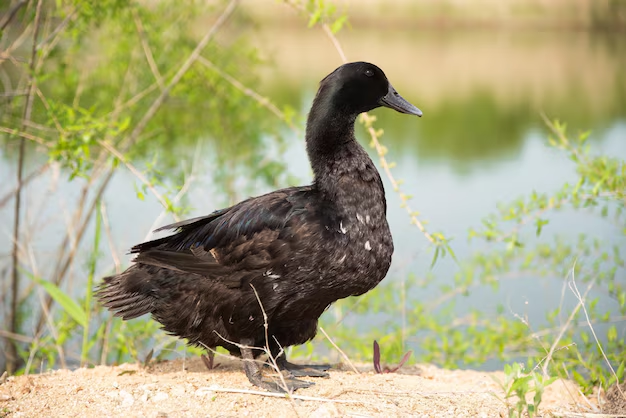
Pomeranian ducks are elegant, medium-sized birds with a striking mix of black or deep blue feathers on their bodies and wings. The blue feathers, especially on the back and wings, can catch the sun and gleam beautifully. Males are the more colorful, while females are slightly subtler, but both show that classic bluish shine. These ducks are a delight for backyard watchers or anyone keeping domestic ducks who wants a splash of blue in the flock.
19. African Black Duck
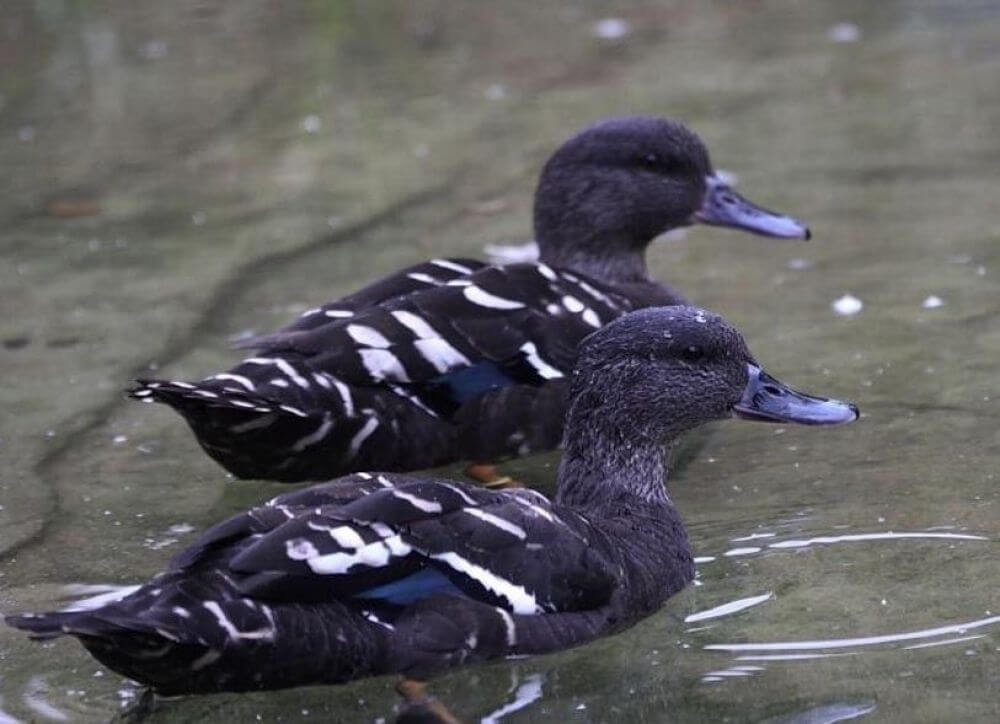
The African black duck is a striking bird with mostly black feathers, highlighted by bold white marks on its back. When it spreads its wings in flight, you can often see a beautiful purplish-blue patch called a speculum. This flash of color stands out against the dark body and makes the duck easier to identify in rivers and wetlands across central and southern Africa. Males are slightly bigger than females, and both have bright orange legs that contrast nicely with the dark feathers.
20. Australian Spotted Duck
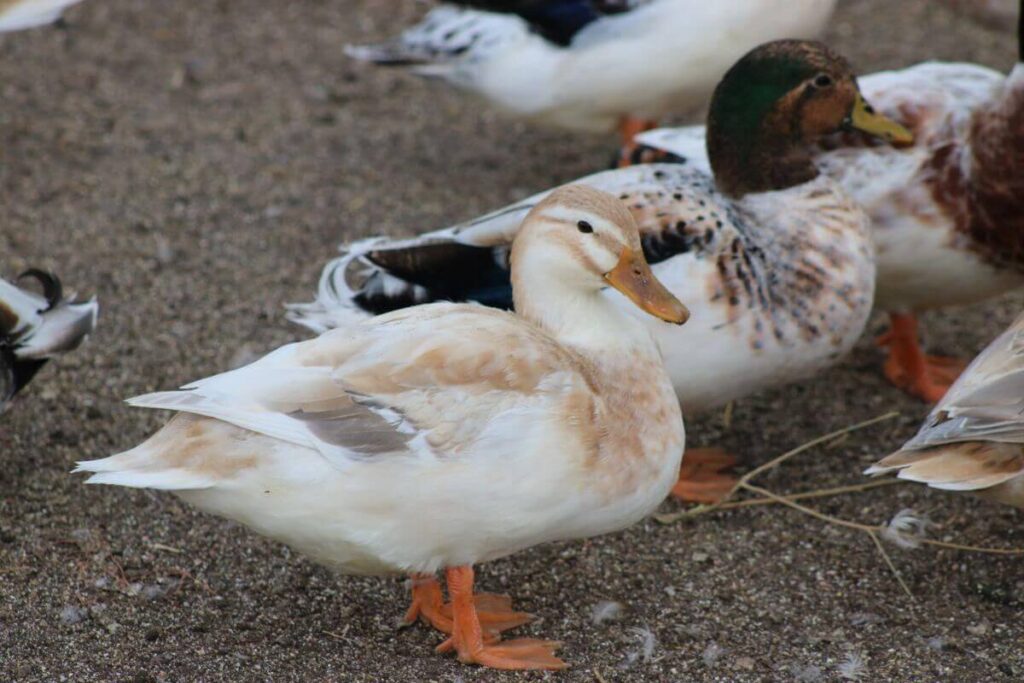
Despite the name, the Australian Spotted duck actually comes from the United States. This domestic breed can have green, blue, or silver heads, and the blue-headed variety displays a soft, lovely blue color on its head and sometimes in patches on the body. These ducks were created by crossing different breeds like Calls and Mallards to get their unique spotted patterns and shimmering feather colors.
